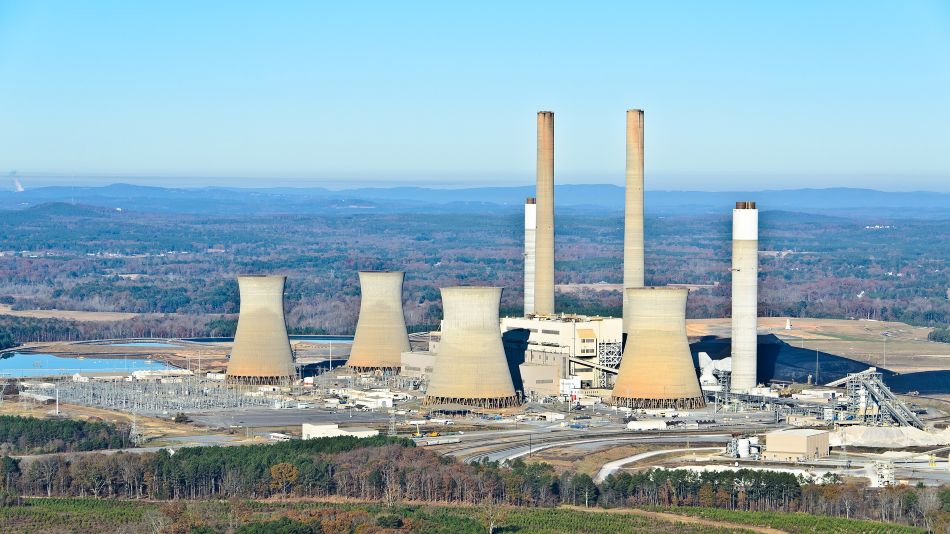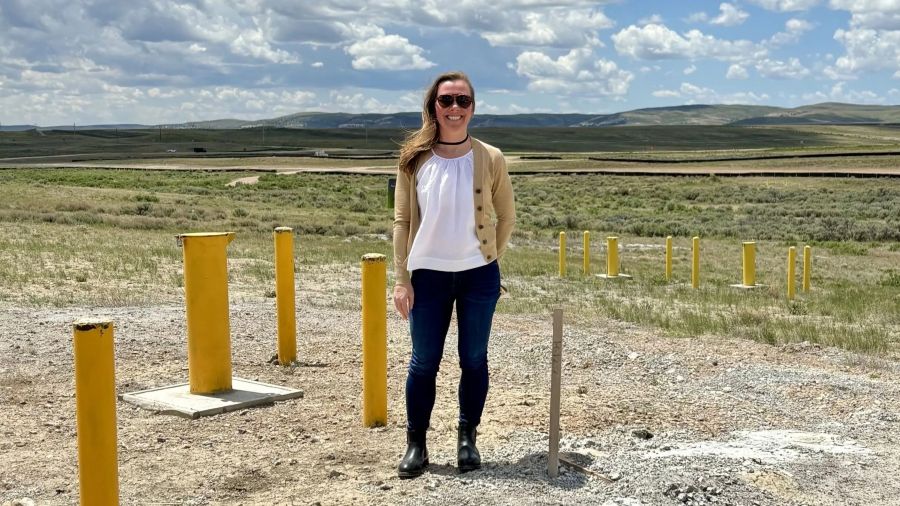Students Win Prizes, Refine Presentation Skills at the Society-Wide Micro and Nano Technology Forum
Students Win Prizes, Refine Presentation Skills at the Society-Wide Micro and Nano Technology Forum
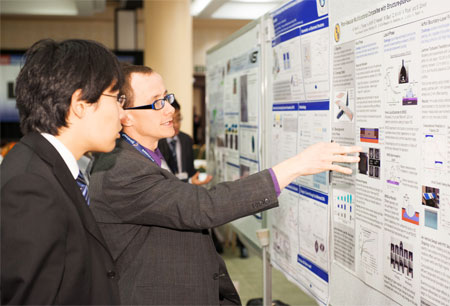
The Society-Wide Micro and Nano Technology Forum, held at the ASME International Mechanical Engineering Congress and Exposition last month, provided 130 engineering students with the opportunity to present technical poster presentations to more than 500 Congress attendees, including ASME leaders and representatives from the National Science Foundation.
Nine awards and more than $3,000 were bestowed during the Forum, which took place Nov. 19 in San Diego. At the end of the five-hour event, Woochul Lee of the University of Michigan was named overall best poster winner. Lee's poster, "Heat Dissipation in Atomic-Scale Junctions," reported on heat dissipation studies in atomic and single-molecule junctions using custom-fabricated scanning probes with integrated nanoscale thermocouples. The Forum's overall second-place prize went to Banafsheh Barabadi for her poster presentation, "Experimental and Numerical Study of Rapid Transient Joule Heating in 3D Embedded On-Chip Interconnects." Lee and Barabadi each received $500 for placing first and second, respectively.
Prizes were given in seven categories: Applied Mechanics, Bioengineering, Fluid Mechanics, Electronic and Photonic Packaging, Materials, MEMS and Heat Transfer. Four of ASME Divisions — the Applied Mechanics, Electronic and Photonic Packaging, MEMS and Heat Transfer Divisions — offered $500 prizes in conjunction with their awards.
The Applied Mechanics Division best poster award was given to Sourabh Saha for the poster "Prediction and Fabrication of Complex Micro and Nano Scale Patterns via Wrinkling." The Electronic and Photonic Packaging Division's top prize went to Katherine Smyth from Massachusetts Institute of Technology for her poster "Hafnia Plugged Optical Nanostructures for High Temperature Photonic and Plasmonic Applications."
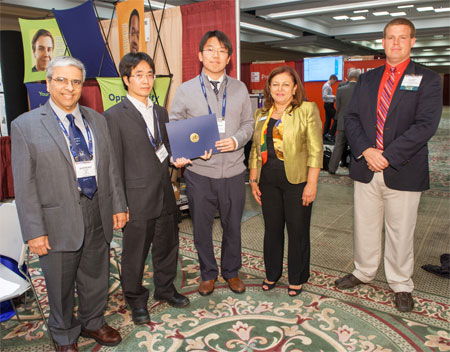
Tae Gon Cha and Tarun Jain were both selected as winners of the MEMS Division's top awards and split the $500 prize. Cha, a student at Purde University, was selected for the poster presentation "Carbon Nanotube Based Nanomechanical Systems." Jain, who attends MIT, was honored for the poster "Automated Platform for Multiplexed Measurements in Solid-State Nanopore Devices." The Heat Transfer Division also selected two winners, each receiving $250: Bo Zhao of Georgia Institute of Technology for the poster "Prediction of the Maximum Resonance Wavelength in Deep Gratings Based on Magnetic Polaritons," and Sangyeop Lee of MIT for "Resonant Bonding Leads to Low Thermal Conductivity."
Omid Khandan of University of California, Riverside, won in the Bioengineering category for "Characterization of Fenestrated Titanium Microneedles for Passive Ocular Drug Delivery." Richard Perkins of Brigham Young University received the award in the Fluid Mechanics best poster category for "PIV Measurements of Turbulent Channel Flow Over Superhydrophobic Surfaces with Superimposed Riblets." Gareth Fotouhi of the University of Washington won the top prize in the Materials category for his poster "Single-Wire Metal-O2 Battery Operating in Biological Fluids for Portable Point of Care Devices."
The NSF provided travel grants to 20 of the student presenters, enabling them to attend the forum. The Applied Mechanics Division also contributed $500 to underwrite a student travel grant.
Khershed Cooper, the program manager at the NSF who helped coordinate the travel funding for students, gave a brief talk about the government agency and its Nanomanufacturing and Scalable Nanomanufacturing Programs. Dr. Cooper discussed how the agency's Nanomanufacturing Program identifies proposals that address challenges and barriers to manufacturability at the nano-scale. Meanwhile, the NSF's Scalable Nanomanufacturing Program seeks to foster multi-disciplinary collaborations between government and industry with the potential for significant and broad impact. Scalability of processes is a necessity to be considered for this program, he said.
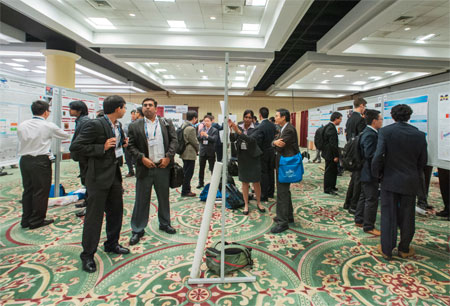
Cooper thought the event was a complete success for all involved — presenters and attendees alike. "I was impressed by the posters, the students' enthusiasm, the attendance and the intense interest from the audience," Dr. Cooper said. "While there were best poster winners, every student was a winner. It is a great way to allow students to explain their research to interested folks freely. Posters help put together a story, and force researchers to organize their thoughts and think through their problem, which helps them arrive at viable solutions."
Stuart Joseph Williams of the University of Louisville served as chair of the Society-Wide Micro and Nano Technology Forum, while Ronggui Yang of the University of Colorado and Umut Gurkan of Case Western Reserve were co-chairs for the event. ASME President Madiha El Mehelmy Kotb provided remarks before the awards presentation at the end of the Forum.
Plans are underway for next year's Society-Wide Micro and Nanotechnology Poster Forum at the 2014 Congress in Montreal, Canada. Visit track 17-15 on the 2014 Congress website at http://www.asmeconferences.org/Congress2014/index.cfm. For further information contact Christine Reilley, ASME Program Manager, at ReilleyC@asme.org. For information about the ASME Nanotechnology Institute, join the Institute's group page on ASME.org.



